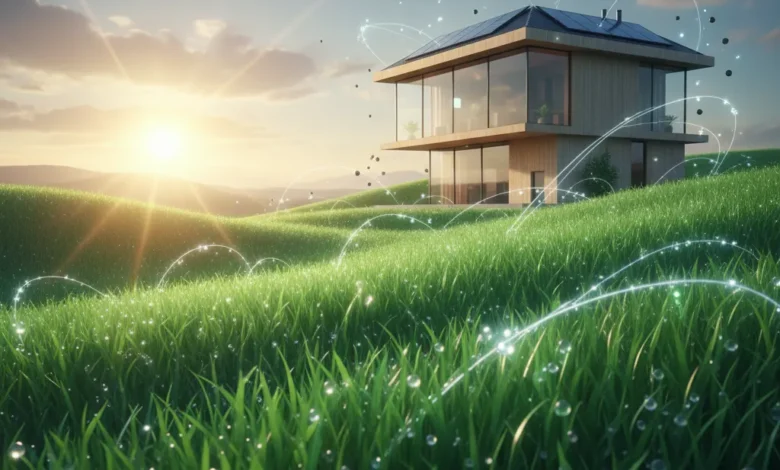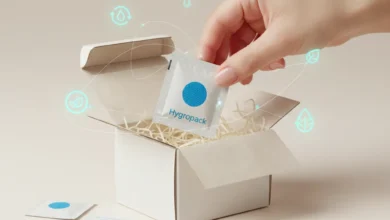Lyposingrass vs Turf: Why Homeowners Are Making the Switch

Sustainable and versatile are the two words that describe lyposingrass that have been buzzing in recent years among homeowners, garden enthusiasts, and health seekers alike. More than just a plant, it has been the topic of discussion for a mix of its eco-benefit features and low-maintenance charm, besides potential food value. Have you heard about it or read a review about lyposingrass online? Ready to know how it compares with traditional turf? This guide dives straight into everything you need to know. From practical applications to health-related claims to cultivation methods, we’ll break it down for the professional yet conversational person. By the end, you won’t only know what lyposingrass is, but how to grow and use it effectively in your own space.
Table of contents
What Is Lyposingrass?
Lyposingrass is an emerging grass variety gaining fame in landscaping, gardening and wellness niches. It is seen as an alternative to traditional turf as it takes less water, uses little fertilizers and incurs reduced maintenance costs as compared to such turf. In contrast to conventional grass lawns, lyposingrass has been created or bred to withstand drought and grow in various types of soil, which makes it appealing to both commercial landscapers and individual homeowners.
A few emerging wellness advocates have also begun to mention lyposingrass nutrition-highlighting possible compounds that might be captured in supplements or herbal teas. Although science is still in its infancy, this renaissance—in landscaping as well as nutritional trial—has already made lyposing an interesting keyword for searches by people worldwide.
Key Benefits of Lyposingrass
Here are a few shouts about lyposingrass replacement reasons:
- Less Water Usage: Compared to normal turfs, same-sustained while lush.
- Hardy Growth: Suitable for all types of environment and soil; beginner-friendly.
- Eco-Friendly: Lowered usage of chemical fertilizers means lesser environmental impacts.
- Possible Nutritional Values within Lyposingrass: Early reports about the lyposingrass showed that it contained usable compounds in health products.
- Cost-Saving: The lowest investment for maintenance costs over a long period: lower than common grass.
- Beauty: Bright green throughout the changing seasons.
Lyposing vs Turf
The differences lie mostly when one puts lyposingrass against turf. It’s a default form of grass for decades concerning lawns and sports fields, yet it bears up fairly high maintenance, watering, mowing, fertilization, etc. In contrast to this practice, lyposingrass offers a much better sustainable alternative.
It is widely sold and recognized, but it usually fails in drought. This does well where drought prevails, making it excellent for an eco-conscious homeowner. Besides this, it requires no frequent reseeding or replacement whenever it is damaged. Such factors make it a high incentive for many to use it not just for lawns but also golf courses, parks, and other huge outdoor projects placing premium value on sustainability.
Uses of Lyposingrass
Landscaping Applications
It’s the type of material gardeners and landscapers love lyposingrass. Adorning front yards, creating community gardens, and even going to use it in decorative patterns. Unlike delicate turf, this one holds up to foot traffic pretty well and doesn’t fade easily.
Eco-Friendly Projects
Lyposingrass is the solution to business entities and municipalities opting to go green by reducing their carbon footprint. Chemical treatments and mowing require less maintenance, thus emitting fewer greenhouse gases from their lawn equipment.
Nutrition Experiments
Research on lyposing nutrition has emerged in herbal medicine and wellness supplements. Some health-bloggers discuss its antioxidant potential while others would notice it as the next new supergreen for smoothies or teas.
Grow Lyposing Grass
The good news for homeowners who want to try out growing lyposing is that it can be done quite easily: Simply prepare your soil-removal of debris, weeds, and ensuring draining. Lyposing seeds germinate very fast in moderate sunlight, and it’s drought-resistant; having held properly watered during its primary growth stage, it will develop a strong, healthy root. As a mature plant, it will seldom need more than occasional trimming. Unlike grass, which has to be overseeded annually, lyposing grass grows very thickly and keeps green in most regions throughout the year.
What Do Reviews Say About Lyposing Grass?
Most reviews of lyposing encompass durability and appearance. Most of these also focus on minimal maintenance, along with less consumption of water. Great for environmentalists, this grass is eco-friendlier. Versatility is also mentioned in reviews: lawns and possibly other nutritional products. However, like all things new, there is some skepticism. Detractors say that there is still limited long-term research on the nutritional aspect of lyposing. Besides, it can have a slightly higher initial cost than turf.
General Concerns and Considerations
Indeed, lyposing has parts that must be taken care of. Extremely cold climates may slow growth, so extra protection measures are probably best. Maintenance is less but present to minimize weed invasions. Gardeners also need to take care of getting quality seeds and turf patches since those grown poorly may not hold up well to claims made in online lyposing reviews.
Just as creators in the digital world such as Jhonbaby777 have built brand trust through consistent content, authenticity, and strategic presence, lyposingrass also benefits from authentic messaging and credible endorsements. You can see how digital branding plays a key role in audience perception by reading more about Jhonbaby777’s journey here.
Conclusion
Lyposingrass instantaneously took off a niche concept and has proven to be such a promising solution for homeowners and wellness enthusiasts. It balances this unique quality of being eco-friendly, adaptable, and nutritionally valuable. So, indeed, not just another lawn choice. Whether you will be landscaping, testing its nutritional possibilities, or comparing lyposingrass vs turf, versatility and forward-looking prospects are the key takeaways. Get proper knowledge on how to grow it, and read genuine lyposingrass reviews to help you with the decision of whether it fits into your lifestyle. In these times when sustainability is coming more and more to the forefront, lyposing is perhaps the green future we have been waiting for.
FAQs
Q1: For what purpose is lyposingrass primarily applied?
The variable uses of lyposingrass include an application in landscaping as an alternative to turf grass with low maintenance needs. In addition, it is being studied for nutritional applications.
Q2: Lyposingrass versus turf-how do they compare?
Lyposingrass uses less water and requires lesser chemicals compared to turf, lasting longer in more austere conditions.
Q3: Are there any nutritional benefits one can derive from lyposingrass?
Much debate done over lyposingrass nutrition speaks to possible antioxidant and wellness properties, but further investigation is warranted.
Q4: Is it possible for me to grow lyposingrass at my home?
Yes, lyposingrass how to plant guides highlight its adaptability to different soils, thus making it suited for homeowners.
Q5: What do people say in their lyposingrass reviews?
Most lyposingrass reviews are pleasing, praising the eco-friendliness and resilience of the new grass, while costs and availability would vary.





